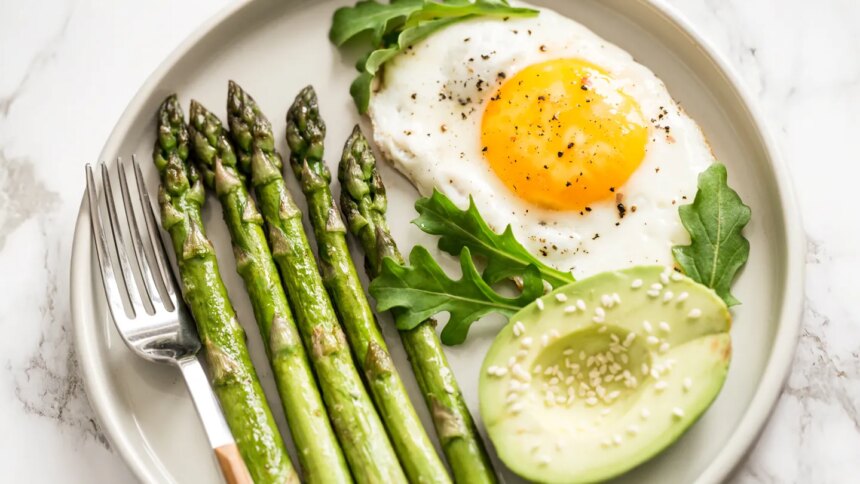1. Know What Foods You’ll Eat and Avoid on the Ketogenic Diet
When following a keto meal plan, you’ll be severely limiting carbs. Kristen Mancinelli, RDN, a New York–based nutritionist, recommends starting off with between 20 and 30 grams of carbohydrates per day.
Also, become familiar with which foods have mostly carbs, fat, or protein, so you can choose the right balance of nutrients. It’s not just bread, pasta, chips, and sweets that contain carbs. Beans are also high in carbohydrates, and fruits and veggies also contain mostly carbs.
The only foods that don’t contain any carbs are meat (protein) and pure fats like butter and olive oil.
2. Examine Your Relationship With Fat — Because Keto Involves Lots of It
“People are afraid of fat because they’ve been told that it’ll kill them,” says Mancinelli. What is confusing is that research today remains mixed.
To prepare for a high-fat diet, which can be uncomfortable at first, start by making small adjustments to what you eat every day, Mancinelli suggests. For example, try ordering a burger on lettuce leaves and subbing green veggies instead of fries.
Instead of potatoes or rice with your meal, opt for a nonstarchy veggie. Start cooking with more oil, such as olive or avocado oil. Realize that old dieting habits — like making a plain skinless grilled chicken breast — just don’t make sense on a keto diet because you won’t get enough fat.
“Slowly start pushing out carbs and getting in fat. If you’re afraid of fat, a ketogenic diet won’t work for you,” Mancinelli says.
3. Switch Up Your View of Protein — This Is a Moderate-Protein Diet
A common misconception about the keto diet is that you can eat as much protein as you’d like. But you’re not only watching carbs — you also have to keep your protein intake moderate, says Ginger Hultin, RDN, a Seattle-based registered dietitian.
4. Hone Your Cooking Skills to Make Fresh Fare, as High-Carb Processed Foods Aren’t Okay on Keto
Look at keto websites and cookbooks for keto-approved recipes you’ll love. Mancinelli recommends finding four to five recipes with foods you know you’ll like. “That way you don’t stand around wondering what to eat and turn to carbs,” she says.
5. Talk to Your Family About Your Weight Loss Goals on the Diet
You may not be able to eat what your family is eating during mealtimes, so tell them your plan. You’ll want to prepare them (and yourself) for what your new habits will look like. Because this diet is often shorter-term (three to six months), you can assure them it’s temporary.
If you get pushback, announce: “I’ve done my research, I’ve figured out it’s safe, and I really want to try this,” recommends Mancinelli. They don’t have to like what you’re doing, but it does help if they have your back.
It also won’t hurt to let other people know about your goals on a keto diet — they’ll be less likely to push office treats on you or suggest splitting a side of fries when you’re out to dinner.
6. Know What Side Effects to Expect
Along with the good things that come with a ketogenic diet (like weight loss), there’s one big side effect you have to be prepared for: keto flu.
“Keto flu” is a term that refers to the period at the beginning of the diet when your body is adjusting to burning fat for energy. “Some people have no problem with it, and others are miserable,” says Mancinelli.
Because of the initial side effects, you should pick a week to start keto that isn’t crazy with deadlines and obligations. Instead, choose a slower time when you can rest as needed. Along the same lines, you’ll want to be sure to take it easy with exercise for the first week or two, as your body adjusts to burning more fat rather than carbs for fuel.
7. Up Your Electrolytes to Prevent or Reduce Unpleasant Keto Side Effects
8. Acknowledge When Keto Might Not Be Right for You
Now that ketogenic diets have become popular, many keto hybrid diets have sprung up, including plant-based versions. One example is the ketotarian diet, which is predominantly plant-based but can include eggs, ghee, fish, and shellfish.
While a plant-based keto diet can be healthy, Hultin cautions against trying keto as a vegan. “Because you can’t eat beans or lentils on a ketogenic diet, and even nuts and seeds are limited due to their carbohydrate content, you’re really just left with some tofu and will need to rely on low-carb protein powder.” There is a good possibility this won’t pan out. “I don’t see this as a sustainable diet, due to the extreme restrictions,” she says.
One last consideration: If existing personal dietary restrictions require you to avoid foods like soy, eggs, nuts, dairy, or seafood, a ketogenic diet may be too limiting for you. Eliminating even more foods while already on a restrictive diet can make it incredibly tough to follow, she says.
9. Have an After Plan, Because Keto Shouldn’t Be Used as a Long-Term Weight Loss Solution
A keto diet is not meant to be a forever diet, and experts recommend keeping it shorter-term.
A keto diet can decrease body weight, but so can many other dietary approaches. In the long term, researchers conclude that the risks of a keto diet outweigh the benefits.
Common short-term approaches, Mancinelli says, include going on a keto diet a few times per year or using it to lose weight and change eating habits.
For some people, keto is an attempt to change poor eating habits. But because the diet is temporary, they risk falling back into old ways once the diet is over.
If you do decide to try a keto diet in the short term, Mancinelli says that your ultimate goal should be “to shift your diet to a healthier pattern that involves eating less bread, pasta, flour, and sugar,” as well as more nonstarchy veggies.
The Takeaway
- A keto diet involves limiting most carbs and increasing your intake of fat.
- Learning the nutritional value of foods, planning meals, and seeking support can increase your success with a keto diet.
- Keto diets are meant to be short term, and they may not be safe for everyone. Talk with your doctor before starting a keto diet.









